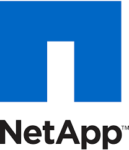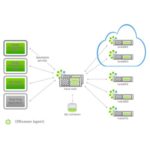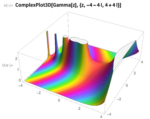San Francisco – August 6, 2020 – Mode Analytics, the leader in advanced analytics, today announced that it has closed a $33 million round of Series D funding led by H.I.G. Growth Partners, along with Valor Equity Partners, Foundation Capital, REV Venture Partners, and Switch Ventures. Mode will use the funds to accelerate its leading analytics platform, […]
Mode Analytics Raises $33 Million in Series D Funding, Led by H.I.G. Growth Partners
NetApp Deploys Iguazio’s Data Science Platform for Optimized Storage Management
Previously built on Hadoop, NetApp said it was also looking to modernize the service infrastructure “to reduce the complexities of deploying new AI services and the costs of running large-scale analytics. In addition, the shift was needed to enable real-time predictive AI, and to abstract deployment, allowing the technology to run on multi-cloud or on premises seamlessly.”
Bright Cluster Manager for Data Science Now Available at No Charge with Easy8
Today Bright Computing announced that Bright Cluster Manager for Data Science is now available at no charge as part of the Easy8 program. Launched in November of 2019, Easy8 is designed to put Bright’s award-winning cluster management software in the hands of every organization working with high-performance Linux clusters. Easy8 offers the full-featured Bright Cluster Manager software free for up to 8 nodes, and now includes Bright Cluster Manager for Data Science. Bright Cluster Manager automates the process of building and managing heterogeneous Linux clusters that span from your on-premise datacenter to the cloud, and to the edge.
Take the Data Science Survey from the University of Pisa
A research team from the University of Pisa seeks your participation in their Data Science Survey. The survey is mainly addressed at those who work every day in the field of data science, either on their own or for a company. “This questionnaire will provide the starting point for defining a common framework among those working in data science. We think we will make the results of the questionnaire public 100%, so that the community can benefit from it.”
Accelerate Big Data and HPC applications with FPGAs using JupyterHub
Today InAccel annnounced that it has integrated JupyterHub into the company’s adaptive acceleration platform for FPGAs. InAccel provides an FPGA resource manager that allows the instant deployment, scaling and virtualization of FPGAs making easier than ever the utilization of FPGA clusters for applications like machine learning, data processing, data analytics and many more HPC workloads.
Supercomputing and the Scientist: How HPC and Analytics are transforming experimental science
In this video from DataTech19, Debbie Bard from NERSC presents: Supercomputing and the scientist: How HPC and large-scale data analytics are transforming experimental science. “Debbie Bard leads the Data Science Engagement Group NERSC. NERSC is the mission supercomputing center for the USA Department of Energy, and supports over 7000 scientists and 700 projects with supercomputing needs.”
Wolfram Research Releases Mathematica Version 12 for Advanced Data Science
Today Wolfram Research released Version 12 of Mathematica for advanced data science and computational discovery. “After three decades of continuous R&D and the introduction of Mathematica Version 1.0, Wolfram Research has released its most powerful software offering with Version 12 of Wolfram Language, the symbolic backbone of Mathematica. The latest version includes over a thousand new functions and features for multiparadigm data science, automated machine learning, and blockchain manipulation for modern software development and technical computing.”
Intel High-Performance Python Extends to Machine Learning and Data Analytics
One of the big surprises of the past few years has been the spectacular rise in the use of Python* in high-performance computing applications. With the latest releases of Intel® Distribution for Python, included in Intel® Parallel Studio XE 2019, the numerical and scientific computing capabilities of high-performance Python now extends to machine learning and data analytics.
Rapids: Data Science on GPUs
Christoph Angerer from NVIDIA gave this talk at FOSDEM’19. “The next big step in data science will combine the ease of use of common Python APIs, but with the power and scalability of GPU compute. The RAPIDS project is the first step in giving data scientists the ability to use familiar APIs and abstractions while taking advantage of the same technology that enables dramatic increases in speed in deep learning. This session highlights the progress that has been made on RAPIDS, discusses how you can get up and running doing data science on the GPU, and provides some use cases involving graph analytics as motivation.”
Accelerated Python for Data Science
The Intel Distribution for Python takes advantage of the Intel® Advanced Vector Extensions (Intel® AVX) and multiple cores in the latest Intel architectures. By utilizing the highly optimized Intel MKL BLAS and LAPACK routines, key functions run up to 200 times faster on servers and 10 times faster on desktop systems. This means that existing Python applications will perform significantly better merely by switching to the Intel distribution.












